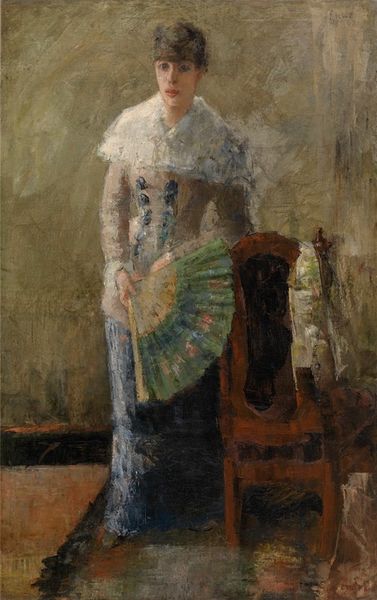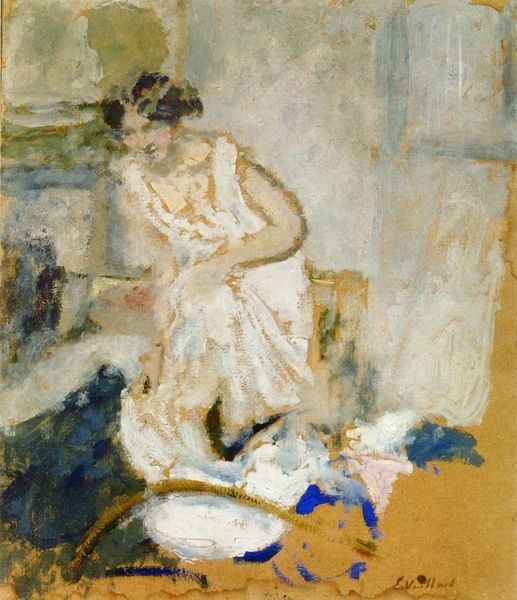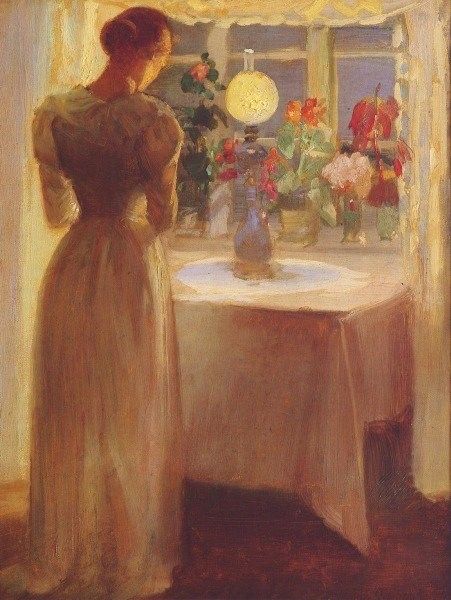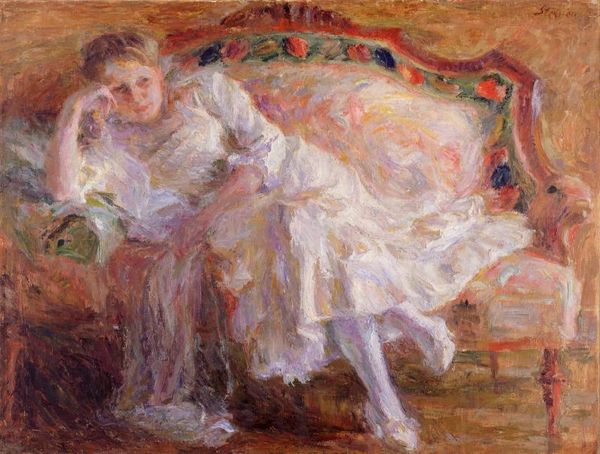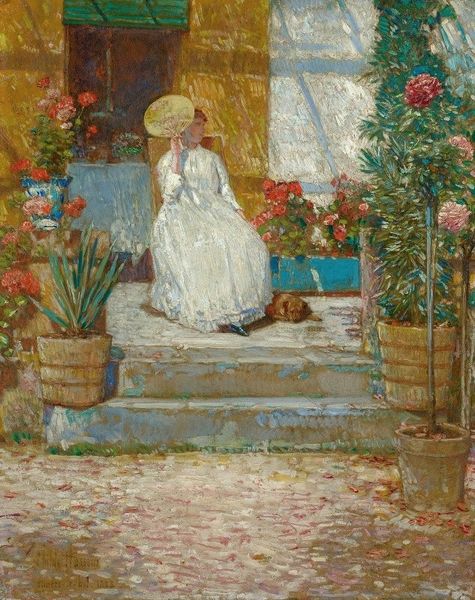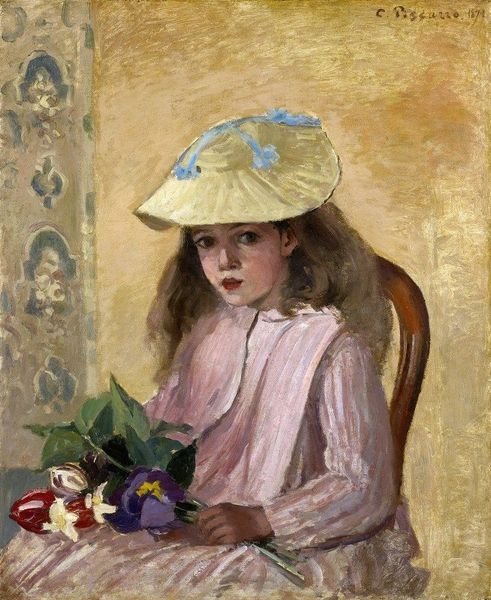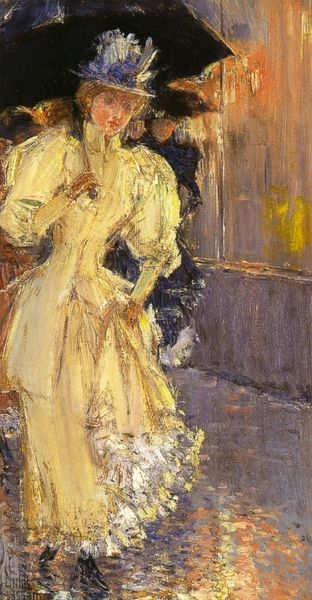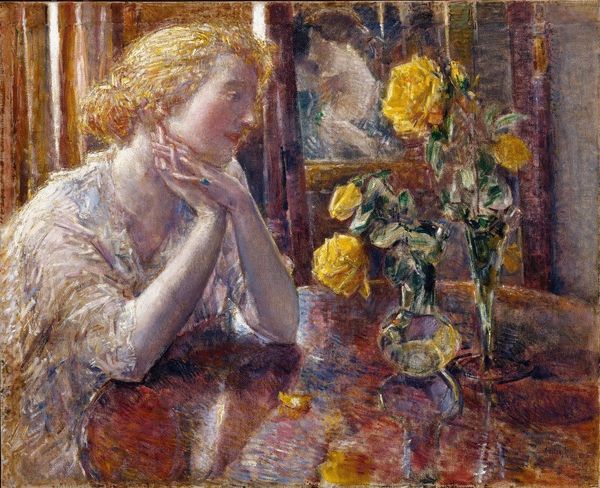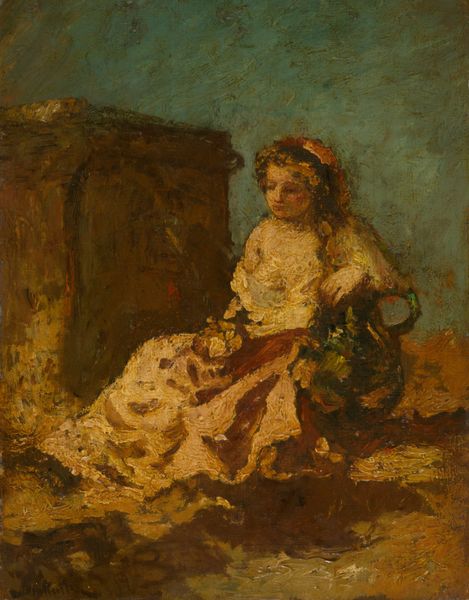
Copyright: Public Domain: Artvee
Curator: This painting, "Granny's Name Day," likely created around the early 20th century, is by the Polish artist Olga Boznanska. It’s an oil on canvas and offers a lovely example of her impressionistic portraiture. What strikes you first? Editor: The sheer softness! It’s like stepping into a memory, all diffused light and muted colours. The little girl in her white dress, though... there's a strange stillness to her pose that suggests more than just a portrait. Curator: Exactly! Boznanska often imbued her portraits with a psychological depth, capturing a certain melancholic introspection. This piece reflects an intimacy that, while gentle, feels subtly unsettling. Think about childhood performances, rituals. The girl presents herself on display. Editor: Absolutely. There's a fascinating tension between the overt celebration—the "name day," her fine dress, the flowers—and what feels like an inner life kept separate. We are seeing the spectacle of celebration but perhaps the subject's alienation as well. Is there commentary here on performance? Curator: Performance, certainly. I always read Boznanska's brushwork as intentional ambiguity— the edges soften and details blur. It seems to allow for this kind of space between presentation and reality. There’s a similar ambiguity with the setting, and the barely suggested older woman, maybe the Granny of the title? Editor: That older figure feels deliberately obscured, almost fading into the background. You can see how gender operates, here too. Consider the performance, then, of what it means to be a woman presented for appreciation, as well as a grandmother fading away to give her center stage. Is Boznanska saying that women get replaced over time? Curator: That could certainly be one reading. I am often struck by the sense of transience captured through such tangible media. Oil feels so sturdy, lasting, while the moment portrayed feels as if it’s dissolving. Editor: This interplay is striking. The enduring material used to create this soft visual. The blurring allows room for new perspectives. We must question the dynamics behind celebrations. It lets us see and reflect on who exactly performs what role for whose enjoyment. Curator: Very well said! It’s a lovely, poignant work full of unanswered questions. It resonates with so many levels, then. Editor: Precisely. It encourages us to consider a spectrum of perceptions and perspectives about performance.
Comments
No comments
Be the first to comment and join the conversation on the ultimate creative platform.

